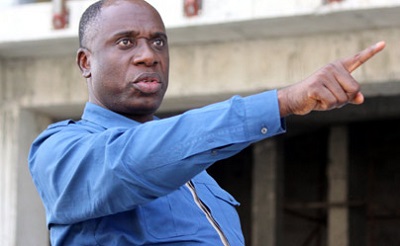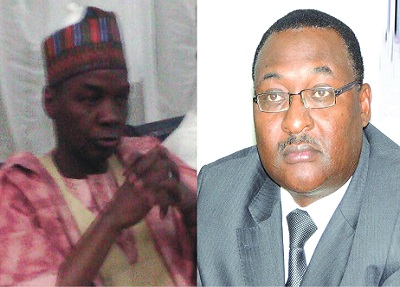Stemming Capital Flight In Aviation Sector To Save Naira And Airlines
High cost of maintenance has been a perennial challenge for Nigerian airlines because major checks are done overseas and they have to face the vagaries of unstable forex.
About five years ago it was projected that Nigerian airlines spend about $2 billion overseas on aircraft maintenance. But with increased fleet that amount has risen to a projected $3 billion in 2021. So it is a huge capital flight from Nigeria.
Instability of the naira in relation to its value against other major currencies has been a protracted problem that is getting worse as the nation’s economy plummets. So, not having major Maintenance, Repair and Overhaul (MRO) facility in Nigeria has forced the airlines to be at the mercy of such facilities at other parts of the world. Conducting maintenance overseas has three major disadvantages: One it is relatively costly due to forex, two, it causes delay and three, it gives rise to logistics challenge. Above all, sourcing the foreign exchange has become extremely difficult for the airlines.
Inevitably the airlines have to pay more. Ferrying the aircraft overseas costs money, keeping the pilots in hotels and moving inspectors from the Nigerian Civil Aviation Authority (NCAA) to the maintenance facility also costs money. The Nigerian carrier has to also queue, as the maintenance organsiation may have other priorities and the Nigerian carrier will continue to pay for parking space while at the facility.
From 2019 to 2021 some Nigerian airlines aircraft ferried for maintenance had to be delayed because some MRO facilities were on lockdown and even when some started, they had to conduct the checks on first come, first served or other priority basis. That led to paucity of operating equipment for months in Nigeria. The under capacity gave rise to outrageous airfares, flight delays and cancellations. Industry insiders noted that if Nigeria had major MRO facilities they could have worked why majority of other countries were on lockdown because Nigeria was not adversely exposed to COVID-19 after the lockdown was lifted at the time many other countries were still on lockdown.
The Director of Engineering, Ibom Air, Lukeman Animaseun, said that one of the greatest mistakes made by those who managed the aviation industry over the years was not to see the urgent need to have major aircraft maintenance facility in Nigeria. He said this was major drawback to the growth of the industry, adding that as long as Nigerian airlines conducts major checks overseas, there would continue to be capital flight.
Animaseun noted that in the effort to develop the aviation industry, decision makers tended to look at other areas of aviation without acknowledging the critical importance of establishing aircraft maintenance organisation, adding that without major MRO facility in Nigeria, the aviation industry is still underdeveloped.
“After the provision of airport and other infrastructure in the aviation sector, the next need is MRO. Every year so much money is expended by airlines as capital flight as aircraft are taken overseas for maintenance. Nigeria as of today has only Aero Contractors maintenance facility as the only place to maintain commercial aircraft, the Boeing classics. The facility there is even inadequate. If Aero commits 50 per cent of what it has put in schedule airline service to its MRO, it would go a long way in equipping the facility. Most of the existing hangars that we have in Nigeria are for small body aircraft. It is only 7 Star Global Hangar that is sizeable and the facility needs to be expanded for long airplanes.
“To solve this problem, government should encourage investors to invest in aircraft maintenance facilities in the country. If government devotes 50 per cent of the energy it has deployed in airport concession on MRO, we can have major maintenance facilities in Nigeria. We can have three major facilities in Abuja, Kano and Lagos. In the next two to three years, Akwa Ibom would have developed its MRO and put Nigeria on a high pedestal, as far as aircraft maintenance is concerned. If we maintain majority of our aircraft locally, capital flight will significantly reduce,” he said.
However, Animaseun remarked that it is not just having maintenance facility, but there is also the need to train technical manpower, which Nigeria presently lack the needed number and if the facilities are built expatriates would have to be engaged to work in those facilities and this calls for urgent need to training more aircraft engineers.
“We have engineers but they need recurrent and type rating training on particular aircraft types,” he said.
It was gathered from Ethiopia Airlines MRO facility that training indigenous manpower is critical in bringing down the cost of aircraft maintenance because, in the case of Nigeria, everything could be expended in the naira. An airline will pay for the MRO service in naira, pay the workers in naira and only expend foreign exchange on spares.
The facilities when established in Nigeria can offer services to airlines of other countries in West and Central Africa, which would pay in foreign exchange. In a recent visit to Ethiopian Airlines MRO in Addis Ababa, the General Manager, MRO Sales and Marketing, Mr. Henok Haile said that besides maintaining most of its 127 fleet, the facility conducts checks for airlines from many other countries up to D-check. For several years the Ethiopian Airlines MRO has been conducting checks for Nigerian airlines, from Chanchangi, Bellview, Medview and other local airlines and recently Arik Air, Air Peace and others. For over 20 years, Nigerian government has not facilitated the establishment of such facility in Nigeria by providing incentives to investors to build similar facility.
“We conduct checks on almost all aircraft in our fleet and we have B777 and A350 aircraft. We also have B737 and B787 hangar. We also have a paint hangar. We paint aircraft here, as you can see, there is an Arikaircraft that is being painted currently.
“We have capability of repairing airframe, engine and components of the aircraft. We repair Bombardier Q400, Boeing B777, B787, Airbus A350. We have base maintenance and line maintenance capability. For the engine, we have engine used for 787 and 737, we have an overall capability for these aircraft. We also have an overall capability for Q400. We have an overall capability for GTCP 131 and 331. On the component side, we have more than 200 components. We have a repair and overall capacity in our MRO. We have approval from different Africa regulatory body, Middle East, Europe and America. We can perform any maintenance on our facility. We perform maintenance for Arik Air. We have the capability,” he said.
It was also observed that all the technical personnel in Ethiopian Airlines MRO are indigenes of that, as an engineer in the facility said that the airline has maintained a long tradition of training with internationally recognized training school that are attended by foreigners from different parts of the world.
The Managing Director of Flight Logistics Solutions, Amos Akpan, “From my over 30 years experience at the senior management cadre of airlines, maintenance is the costliest component after fuel and funds. No component of aircraft is manufactured, fabricated, or overhauled in Nigeria. You have to keep the aircraft serviceable to fly at least 12 hours a day to make sensible economic utilisation. You constantly have to repair and change units/parts in the aircraft. Some by calendar, some by hours, some just snag, as it is common with machines. You need forex (which is in very short supply in Nigeria) to buy the parts from where these parts are produced, fabricated, or overhauled.
“Problem is that at the time you carried out your business plan and budget, the exchange rate would have been N200 per dollar. At that time you are likely to plan with N300-350 per dollar. How do you adjust your planned income to accommodate N550-580 per US dollar? The airline management has to balance the rising cost of maintenance versus the limitation of increasing fare in a society where the travelers purchasing ability has a ceiling,” he said.
In his suggestion to the solution of this challenge, Akpan noted that Aero has capacity to carry out categories A, B, and C maintenance on Boeing 737 series as certified by NCAA, observing that by physical inspection, Aero facility is small, so the company can’t admit many aircraft that require maintenance. However, he remarked that there are some underutilised hangars with aprons in federal and state airports that could contain more aircraft because they have space.
“Why do we not team with Aero, NCAA, and owners of these facilities to increase and improve the capacity of Aero Contractors maintenance capacity? Also, we have to walk the talk on “ease of doing business” over partnership with foreign maintenance companies. We need to attract them to bring in their equipment and skilled manpower to partner with us. MRO investors have been coming but we drive them to Ghana, South Africa, Rwanda, and Ethiopia,” he said.
Akpan also noted that the Nigerian College of Aviation Technology (NCAT) is training technicians and engineers, but the process of getting this technical manpower to acquire the skills takes too long and it is too expensive.
“A fresh aircraft maintenance engineer need hours on duty line to become proficient and certified. Right now, I’m told they pay operating airlines to allow them log hours on the line because you can only be employed when you have a certain number of hours online. The hours you log in working on an aircraft type is what an airline uses to engage you. Those that cannot afford the money are staying unemployed, while the airlines are short of skilled maintenance manpower. Are we putting the cart before the horse?”
Akpan said the industry should encourage small and medium scale maintenance workshops, adding that one company can specialise in overhaul and repair of aircraft brakes, another on wheels, another on pneumatics and another on electronics.
“All we need is international certification and continuous inspection by NCAA,” he said.
Akpan also noted that some airlines have chosen to escape the burden of high maintenance cost by acquiring new aircraft. New aircraft have lower maintenance cost than older aircraft. But they have to contain with high cost of scarce forex because they still need parts as needed by operating machines, especially the ones that must change by manufacturers specifications/bulletins.
“You have to import the rotables like oil, tyres, brakes. Review of records reveals that what they gained by lower maintenance cost they pay for in high cost of working capital and investment funds in Nigeria. Cost to secure finance in Nigeria is high. We agree that the type of Maintenance Repair and Overhaul facilities in Ethiopia should be our aim, but let us take these low hanging fruits seriously. This will reduce the frequency aircraft are ferried out for minor maintenance. We need adequate funding to establish storage facilities for the spare parts of the aircraft types we are operating in the West African region,” he added.
Culled from This Day








